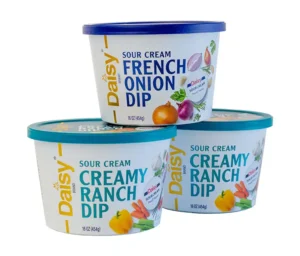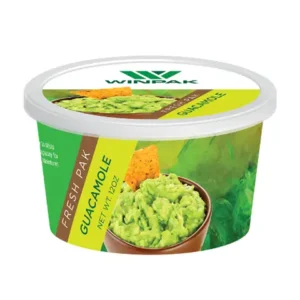Compiled by Jeff Peterson, editor-in-chief, Plastics Decorating
Editor’s Note: This article was developed from a panel discussion held at the 2022 SPE Decorating & Coatings Division TopCon & IMDA Symposium in Ypsilanti, Michigan.
Sustainability continues to be a hot topic in food packaging applications. Consumers want to know their food is safely packaged and stored, while also knowing that they can dispose of it after use without causing problems in the recycling stream. In addition, original equipment manufacturers (OEMs) want their brands to stand out when consumers are making a purchase decision. In-mold labeling (IML) offers a solution for all of these needs.
Dean Hanawalt, senior market product manager at Winpak, and Brian Fleming, regional sales manager at MCC Verstraete, shared thoughts on evaluating applications for IML suitability and food packaging, considerations when it comes to choosing appropriate inks and substrates, and challenges in production.
Q: Why is IML a good choice for food packaging?

Hanawalt: From what we found, many of the food packaging cups and containers in the US are offset printed. IML offers the brand owner the opportunity to upgrade graphics and get “bling” into the product. IML allows them to do different things than they typically would not be able to do with offset printing. For food packaging, sour cream, butter and cottage cheese may not be the most exciting products, but you can upgrade the quality and improve your brand image, which is a big benefit. In addition, when brand owners want to launch new and premium options such as truffle butter or plant-based sour cream, they would want to launch it in an IML package with exciting graphics to differentiate from other brands and product offerings.
Fleming: The gamut of what IML offers dramatically increases the brand owner’s graphics choices. They can make their products stand out with metallic effects or add specific varnishes for a playful yet sophisticated look. In addition to the visual advantages of IML, it allows for functional features as well. Adding barrier protection, for example, is a great asset in preventing food waste for certain product categories. Food producers turning to IML also can benefit from enormous cost savings. To illustrate this, although it branches slightly outside of food, a great example is found in the industrial segment. If you could see a plant making industrial IML-decorated pails, in just a blink of an eye there is a pallet of product sitting there. This is a huge difference with the multi-step and time-consuming process of molding and printing industrial pails.
Q: Consumers are concerned with sustainability issues relating to packaging. How does sustainability play a role with IML and food packaging?

Fleming: Using polypropylene (PP) in-mold labels on PP packaging, it becomes mono-material. Mono-material packaging easily can be sorted and recycled after use, as there’s no need to separate the different packaging components for efficient recycling of the materials. Using IML for their food packaging, brands can make it very easy for their consumers to buy sustainably packaged products.
Hanawalt: In terms of sustainability at Winpak, we surveyed our customers on what they view as sustainable and why and how, etc. The results were interesting. Some said they would prefer a molded fiber container because they thought it was more natural. They use terms like natural, sustainable or environmentally friendly. When you start to peel apart this onion, is a molded fiber container with a film label better? Many don’t understand the science behind it but there is a perception. Something Winpak is able to offer customers is post-consumer recycled resins (PCR). We incorporate it not only in our thermoformed products but also in our injection molded products. Chemically recycled resins are available, but you must prove that you have a customer large enough and worthy enough to implement it, and it is rather challenging. Mechanically recycled PCR resins are available as well, but challenges related to color and odor may thwart use. Sustainability is a lot of things to a lot of people. I think there needs to be more education so everybody is on the same page.
Q: Food packaging can be tricky because of the regulations involved. When there is a food packaging application for IML, what must be considered from a label perspective?
Fleming: For many customers, there is not a huge concern with the labels as they typically are not involved in the specification side. I think a distinction is between the blow mold and the injection mold. On the injection molding side of the business, the molder, who is applying the in-mold label, is somewhat invisible to the film manufacturer. It goes through a label producer, like us, to print the labels, cut and send them to the injection molder – the film provider is out of that loop. So, we specify the films that are in direct food contact as well as all of the inks and coatings to be sure they are indirect food contact proof. It comes down to a lot of end-use application issues. We have products that go through a pasteurization process. This process uses a combination of heat and pressure to destroy harmful bacteria. As you can imagine, this process is very hard on the printed label. Because of this, we have developed a special combination of ink and coating that protects the label from the breakdown of the coating and ink bleed. So, knowing the specifications for the label is very important. Will the container be exposed to freezing or cold or outside in the heat? Are the inks and coatings compatible with the type of plastic film? Does it go through a bath of some sort to wash off the residual food? Does the product need extra barrier protection from light or oxygen? Those are the important issues to consider.
Plastics Decorating would like to thank Dean Hanawalt with Winpak and Brian Fleming with MCC Verstraete for their assistance with this article. Learn more about Winpak at www.winpak.com and MCC Verstraete at www.iml.mcclabel.com/en.


